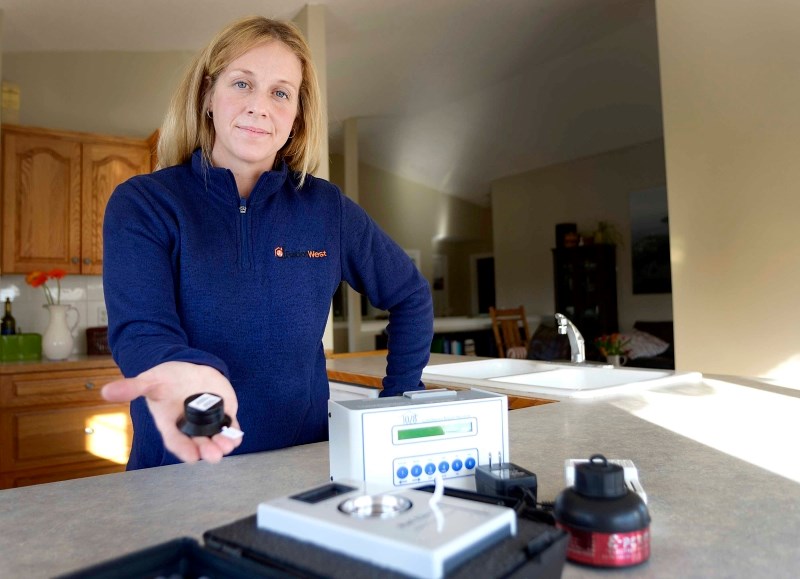It’s odourless, tasteless and invisible.
It’s also the second leading cause of lung cancer, next to smoking, or the leading cause of lung cancer in non-smokers.
And it just might be reaching dangerous levels in your home without you even knowing it.
A radioactive noble gas, Albertans are among the last to know about radon — how long-term exposure to it in enclosed spaces (homes) can be lethal and yet how easy it is to mitigate.
With the push by Health Canada to make November ‘Radon Action Month’, Cochranite and co-owner of Radon West, Renata MacQueen, is on a mission to raise awareness in Cochrane and surrounding municipalities.
“Due to the geology of Southern Alberta, we are in a high risk area and the results we are finding have been consistent with that,” explained MacQueen, who estimates that over 40 per cent of the homes her company tests in Calgary, Okotoks and Canmore are testing high for radon.
MacQueen explained that glacial till gets pushed into Southern Alberta by glaciers from such areas as Alaska, Northern B.C. and the Yukon, where there are high levels of radon.
“In Canada, radon is measured in a unit called a Becqueral per meter cubed (Bq/m3)…we have been consistently finding levels above Health Canada’s actionable 200 Bq/m3, while testing communities from Banff all the way down to Lethbridge.”
MacQueen’s own Cochrane home tested at a staggering 2,491 Bq/m3. Her sister and business partner, Karin Dumais, also tested high, 322 Bq/m3, in her Okotoks home.
This prompted the women to become certified in 2013 as Canadian-NRPP Certified Measurement Professional and Canadian-NRPP Certified Mitigation Professional; the women are two of the six licensed radon measurement and mitigation professionals in the province.
One Cochrane woman has broken the record for Radon West. Her home tested at 3,441 Bq/m3. Although she mitigated her home in the fall of 2012 and continues to regularly test her radon levels, her doctor has referred her for a CT scan, as she lived in her home for so many years with no idea she was being exposed to such high levels of radon.
“I was horrified,” said the women, who wished to remain anonymous. “I couldn’t even be in the house until it was mitigated.”
The women said what concerns her the most is the lack of awareness in Alberta — how so few people she talks to actually know about the side effects of long-term exposure to high levels of radon in their homes.
“Health Canada has had a national program in place since 2008,” explained Kelley Bush, head of radon education and awareness for Health Canada.
“With radon, because it’s a long-term health concern, people are apathetic about it…the risk of radon-induced deaths is the equivalent of all accidental deaths — if people put their lifejackets on or check their smoke detectors, they should check their homes for radon levels.”
Health Canada launched a cross-Canada survey from 2009-2011, testing some 16,000 homes; an average of seven per cent of homes tested over the 200 Bq/m3 acceptable radon level, as per Health Canada guidelines.
Health Canada recommends people purchase a long-term (91-day) radon test kit. The kit can be purchased through Radon West or at other retailers and the cost is $45, including lab fees. Other short-term testing options are available.
The cost to mitigate a home (installation of a radon fan by a licensed professional) ranges from $1,800-$3,000. This will be made more cost effective when Alberta adopts the changes that were made to the National Building Code in 2010.
“A stubbing-in of the underground portion of a radon mitigation system in now part of the National Building Code for new construction and we are hoping that Alberta follows suit soon,” explained MacQueen, adding that people who purchase a radon level testing kit should test at the lowest living level of their home (the basement).
“Through radon can come from other sources such as water and granite, your greatest risk is from soil gas and your first step is always to test for radon in the air.”
To learn more about radon, visit healthcanada.gc.ca/radon or takeactiononradon.ca.
To reach Renata MacQueen, visit radonwest.com.




